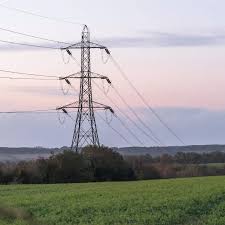Amber Valley’s Scenic Charm Threatened by New Pylon Plans

Beyond the industrial landscapes of north-east Derbyshire and the M1 corridor, the Amber Valley is an oasis of greenery, attracting tourists with its ancient trees, listed buildings, and public footpaths. However, local resident Katie Hirst fears that the planned installation of 50-meter-high pylons by National Grid will drive away visitors and harm the local economy, which has diversified into tourism. Hirst, a co-founder of Save Amber Valley Environment (Save), is part of a growing grassroots movement opposing pylon schemes across the country.
More than 600,000 km of power lines must be installed across the UK to meet the 2030 decarbonisation target. This includes new infrastructure like wind turbines, solar farms, and pylons. The Labour party supports building this new infrastructure to double onshore wind capacity, quadruple offshore wind, and triple solar power by 2030. However, local opposition is strong, with concerns about the impact on landscapes and communities.
Adrian Ramsay of the Green Party called for a pause on pylon plans in his constituency to consider other options. Campaigners argue that alternatives like burying cables using high-voltage direct current (HVDC) technology could be more economical long-term.
National Grid estimates the UK will need to install five times more pylons and underground lines by 2030 than in the past 30 years. Labour MP Alistair Strathern emphasizes the need for speed in building renewable infrastructure to meet climate commitments, reduce energy costs, and create jobs. He argues that opposition to pylons is detrimental to achieving these goals.
Efforts are being made to address community concerns, but the urgency of climate action and energy independence remains paramount.








